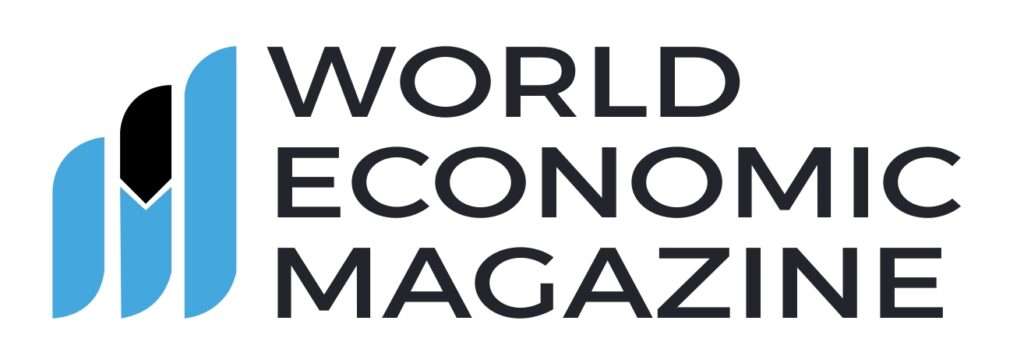
Wall Street Closes Mixed Amid Economic and Trade Policy Uncertainty
Wall Street ended mixed on Friday, with Nvidia’s rally balancing out losses from Microsoft. Treasury yields declined for the second consecutive day after U.S. retail sales data fell below expectations, showing a 0.9% drop in January. December figures were revised to a 0.7% gain, prompting investors to speculate on potential Federal Reserve policy adjustments.
While the bond market surged on softer economic data, market sentiment remained cautious due to ongoing trade policy uncertainties. Former President Donald Trump’s declaration of reciprocal tariff plans added to investor concerns, although no immediate new tariffs were imposed.
Nasdaq Hits Record Highs as Yields Drop
The 10-year Treasury yield fell by 7 basis points to 4.44%, fueling a 0.4% increase in the Nasdaq 100, which reached a record high. Nvidia led the gains with a 2.6% jump, followed by Apple at 1.3%. However, Microsoft and Amazon faced declines of 0.5% and 0.7%, respectively.
Trump’s directive for retaliatory tariffs further contributed to market volatility. His nominee for Commerce Secretary, Howard Lutnick, stated that trade policies would be assessed individually, with reports expected by April 1. Investors remain watchful as market fluctuations persist amid evolving economic policies and Federal Reserve decisions.
Market Performance & Global Trade Influence
Tariff Pause Leads to Market Gains
World stock markets were close to record levels on Friday, with European stocks set for an eighth straight weekly rise. Investor mood was boosted after Trump indicated a postponement of reciprocal tariffs, suggesting possible trade talks. Concerns about a wider trade war had previously pushed gold prices to a record high, with the metal set for its seventh consecutive weekly rise.
The dollar fell as easing trade tensions caused a decline, while equities remained buoyant. Investors are keenly observing further information on U.S. trade policy, which could impact global risk appetite and currency fluctuations in the coming weeks.
European Market Growth & Chinese Tech Surge
European markets have risen recently on hopes of an eventual Russia-Ukraine peace accord, expectations of interest rate reductions, and decreasing concerns over steep U.S. tariffs. Goldman Sachs lifted Europe’s STOXX 600 12-month price target amid ceasefire hopes. Chinese technology shares rebounded in Asia, with the Hang Seng Tech Index hitting a three-year peak on Thursday.
Hong Kong’s benchmark index (.HSI) jumped more than 2% on Friday, marking its fifth consecutive weekly increase and the strongest in four months. The rally was driven by a breakthrough from local tech start-up DeepSeek. However, analysts warn that long-term growth depends on Chinese tech firms’ ability to monetize AI while navigating privacy and security challenges.
U.S. Economic Data & Market Reaction
U.S. Producer Prices Increase Significantly
U.S. producer prices posted firm growth in January, bolstering market speculation that the Federal Reserve will wait until mid-year before cutting interest rates. Components linked to the personal consumption expenditures (PCE) index—the central bank’s preferred inflation metric—were weaker, keeping optimism alive that the PCE reading would be below forecast.
This follows Wednesday’s consumer price index (CPI) report, which showed its biggest acceleration in nearly 18 months. The conflicting data complicates the Fed’s decision-making as it weighs inflation concerns against economic growth opportunities.
Dollar Declines as U.S. Yields Remain Steady
The U.S. 10-year Treasury note yield remained at 4.5347% after a steep 10 bps drop on Thursday—the heaviest one-day decline in a month. The dollar index dropped 0.2% to 106.93 and further declined by 0.8% the previous day, marking its heaviest one-day drop since January 20.
Meanwhile, the euro surged to a two-week high of $1.0477 amid speculated peace talks between Russia and Ukraine. Brent crude oil prices rose 0.5% to $75.37 per barrel, while WTI crude climbed 0.4% to $71.45, buoyed by rising fuel demand and ending a three-week losing streak.
U.S. Tariff Fears Shake Mexico’s Tequila Industry
Tequila Makers Face Uncertainty Amid Potential 25% U.S. Tariff
The Mexican tequila industry is on edge as a potential 25% U.S. import tariff looms over their businesses. Producers like Melly Barajas, owner of Azteca Wines and Spirits, fear the impact on their supply chains and overall market stability. Barajas, who runs a Jalisco-based distillery exclusively staffed by women, highlights the extensive planning required for tequila production and how sudden trade policy shifts could disrupt years of hard work.
U.S. Demand for Tequila on the Rise
Tequila’s popularity in the U.S. has surged, overtaking whiskey as the second-most consumed spirit after vodka. According to the Distilled Spirits Council of the United States, tequila imports reached $3.8 billion in the first three quarters of 2024, a 13% increase from the previous year.
However, a steep import tariff could raise tequila prices in the U.S., potentially pushing consumers toward alternative beverages. This would not only affect tequila sales but also disrupt supply chains and negatively impact workers in both Mexico and the U.S. hospitality industry.
Industry Experts Warn of Job Losses and Economic Impact
Like French Champagne and Italian Parmesan, tequila can only be produced in Mexico, making U.S. tariffs particularly damaging. Trade groups warn that increased costs could hurt American businesses reliant on tequila sales, from bars and restaurants to distributors and retailers.
Barajas worries that the uncertainty could derail Mexico’s tequila industry, stating, “We are in limbo, hoping they think this through.” Although demand for tequila is growing in markets like Germany, Spain, and Russia, expanding to these regions takes time and significant investment.
Trade Negotiations and Future Outlook
Trump’s decision to delay the tariff by 30 days following border security agreements with Mexico and Canada has provided temporary relief. However, tequila producers remain wary of long-term repercussions. If imposed, the tariff could undo years of economic growth in the industry, affecting businesses, jobs, and the broader North American spirits market.
Conclusion
Wall Street’s mixed performance reflects ongoing economic and trade policy uncertainties, with Nvidia driving gains and tariff concerns adding volatility. Meanwhile, Mexico’s tequila industry faces a significant threat from potential U.S. tariffs, highlighting the broader economic impact of shifting trade policies. Investors and industry stakeholders alike will closely monitor developments in the coming weeks as both markets adjust to evolving conditions.






